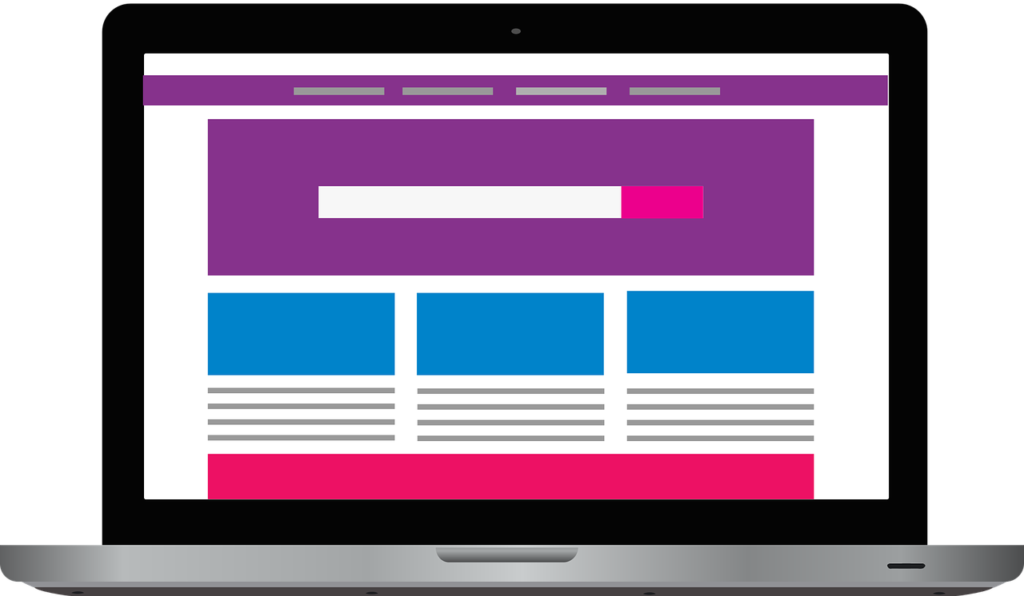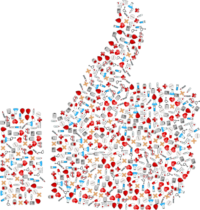
At the beginning of this pandemic, radio stations focused on their on-air responses to the crisis. Online, stations largely addressed the crisis the way they did any other major promotion: create a webpage or two, stick some images in the slideshow on the homepage, and add a banner in the sidebar or header. Now that it’s clear that this situation will last much longer than your average radio promotion and is likely to alter the normal course of our lives, it’s time to re-examine our station websites to see if more significant changes should be made. Rather than simply squeezing COVID-19-related content into the existing website framework, it’s possible we will need to alter the framework of the website itself.
Here are some guidelines for radio station website design in the age of coronavirus:
1. Know your station’s role in the crisis.
On the air, the pandemic is not fundamentally changing the primary identity of most radio stations. If you were a hip hop station before coronavirus, you’re still a hip hop station now; you’re just changing what you talk about between the songs.
The same is true of your radio station’s website. If your website was primarily celebrity gossip and cat memes before the pandemic, it shouldn’t suddenly aim to be the definitive local news source. Unless you’re a news station, nobody is going to start going to your website instead of the CDC or the WHO or CNN or The New York Times. Stay in your lane.
Where your station’s online response might differ from the on the on-air response is in its breadth. On the air, DJ breaks and production elements are short, frequent, and ongoing, so they can cover a lot of ground: a break shouting out local frontline workers, a sweeper about washing your hands, a phoner about funny facemasks, etc. In other words, on the air, it’s good to be a mile wide and an inch deep.
On your station’s website, this approach won’t be effective. This is a worldwide pandemic that is likely to result in a global economic crisis; don’t try to cover every aspect of it on your website. Unless your station is a dedicated news outlet, you don’t have the resources to be everything to everyone. You’ll wind up with a scattershot approach that doesn’t do anything particularly well.
Instead, narrow your focus. Decide what you want your station’s mission to be in the crisis, and execute that mission well. For example, if you have a Hot AC station, you may decide to focus on helping parents who have children to homeschool. If you run an alternative rock station, you may choose to focus your efforts on helping local restaurants, bars, and live music venues. Your station’s mission within the crisis should be in line with its overall brand.
Once you figure out what your station’s mission is, you also need to decide what it isn’t. If the latest death toll in Spain or Boeing’s financial situation don’t fall within the scope of your station’s mission, they don’t belong on your station’s website. Online, stay an inch wide and a mile deep.
2. Rethink your site’s primary calls to action.
When designing a website, the most important question to ask is, “When people come to our site, what do we want them to do?” There will certainly be more than one answer to that question: stream the station, enter a contest, download the mobile app, etc. I’ve written about the importance of explicitly identifying website goals before. However, under the circumstances, we’re going to change the question:
“When people come to our during the pandemic, what do we want them to do?”
Some of the answers will be the same as before; for example, you still want people to stream the station. However, other goals may become more or less important during the pandemic. Getting listeners to download the station’s mobile app or activate an Alexa skill will take on new importance, while getting them to enter a contest may now have much less value. Your station may even have new website goals, such as getting listeners to make a donation to a charity. Even if you have explicitly identified your website goals in the past, it’s a good idea to go through the exercise again in light of the current situation.
Once you have an updated list of goals, review the calls to action on your website. For example, the big red “Listen Now” button still belongs in the top right corner of your website, but maybe it needs a “Download Our App” button next to it. Perhaps the “Sign Up for Concert Calendar Emails” badge no longer belongs at the top of your sidebar. If you’re running a big push to support local heroes, don’t just add a slide onto the homepage; give it a dedicated link in the main menu. Review your site’s calls to action to make sure they are in line with your digital goals.
3. Don’t just tack more stuff on to an already overcrowded homepage.
It’s true what they say — this crisis has only exacerbated society’s pre-existing problems. Exhibit A: Radio station homepages. Almost all of these homepages were way too cluttered before this pandemic began. The last thing you want to do is slap a coronavirus banner on it or stuff a few more slides into the slideshow. (While we’re on the topic, please get rid of that slideshow on the homepage altogether.) If your webpage makes you look like the West Bay’s #1 source for Chili Peppers tickets, Kylie Jenner gossip, Second Date Update recordings, MCU casting rumors, PLUS a list of local restaurants offering delivery, then you’ve taken a wrong turn somewhere. Review your list of website goals, focus on your primary calls to action, and start removing everything else. Remember, less is more.
4. Constantly update or remove the Events and/or Concerts pages.
 Under normal circumstances, a radio station’s online Concert Calendar is one of its most visited webpages. Check your Google Analytics — is that still true during the pandemic? Concerts are being postponed or rescheduled at a rapid rate and some experts are predicting that live events won’t return until next year. At this point, you’ve got to make a decision: either your station is going to stay on top of updating your Concerts and/or Events pages, or you should eliminate them entirely. If you don’t have the resources to update these pages, don’t leave empty listings up on the site; remove the links from your site’s main menu and everywhere else they may appear.
Under normal circumstances, a radio station’s online Concert Calendar is one of its most visited webpages. Check your Google Analytics — is that still true during the pandemic? Concerts are being postponed or rescheduled at a rapid rate and some experts are predicting that live events won’t return until next year. At this point, you’ve got to make a decision: either your station is going to stay on top of updating your Concerts and/or Events pages, or you should eliminate them entirely. If you don’t have the resources to update these pages, don’t leave empty listings up on the site; remove the links from your site’s main menu and everywhere else they may appear.
5. If you’re not running any contests, remove the Contests page.
You have a similar decision to make about your radio station’s contests. If you’ve adapted your contesting to give away pandemicly (“pandemically”? “pandemicably”?) acceptable prizes, make sure the Contests webpage reflects it — including updated instructions about how to claim a prize. If you’ve decided to forgo contesting for the time being, remove the page entirely from your website, including from the main menu. What you don’t want is a Contests page that is empty or worse, that touts prizes that involve wading into a large crowd.
6. Make sure your local news section is really local.
Many radio station websites have a news section that is populated by a third party feed. If you’ve set up a page on your website to offer local coronavirus-related news, make sure that news is truly local. If your station is in Seattle, your site does not need to feature coronavirus stories about Florida. Even with news stories that are national in scope, be selective. Your goal is not to replace hard news sources for listeners, just to serve local, relevant information.
7. Acknowledge local heroes.
 Based on the results of our listener surveys, we know that one of the most popular things that radio stations can do is recognize the hard work of local frontline workers, from doctors and nurses to delivery drivers and grocery store clerks. Gratitude is a good look, so find a way to express it with your website.
Based on the results of our listener surveys, we know that one of the most popular things that radio stations can do is recognize the hard work of local frontline workers, from doctors and nurses to delivery drivers and grocery store clerks. Gratitude is a good look, so find a way to express it with your website.
The coronavirus pandemic isn’t a radio promotion. Don’t treat it like one on your website. Instead, take the time to review your site with a fresh pair of eyes in light of our new reality. Chances are, significant changes are warranted.
- A Simple Digital Treat to Thank Your Radio Listeners This Thanksgiving - November 13, 2023
- Interview Questions When Hiring Your Radio Station’s Next Digital Marketing Manager - November 6, 2023
- A Radio Conversation with ChatGPT: Part 2 – Promotions - October 30, 2023





Leave a Reply